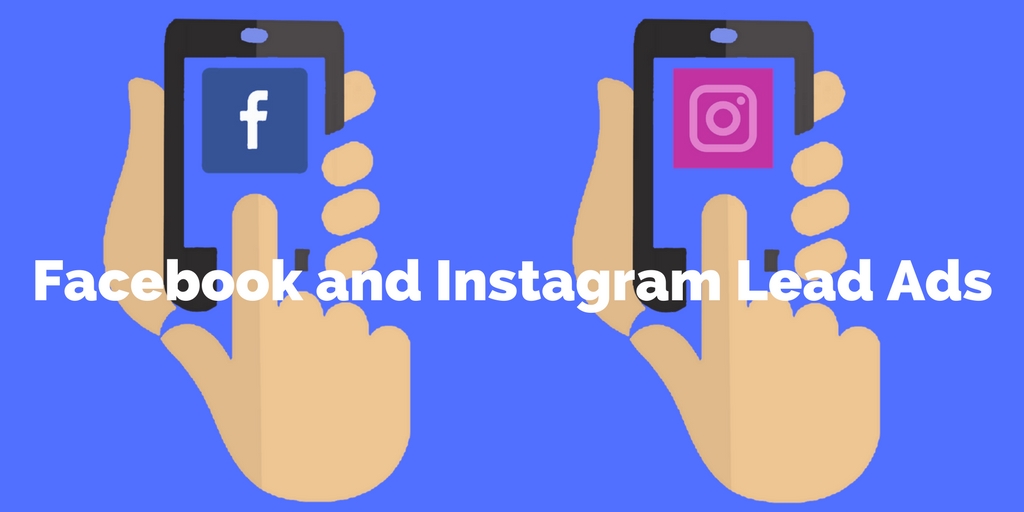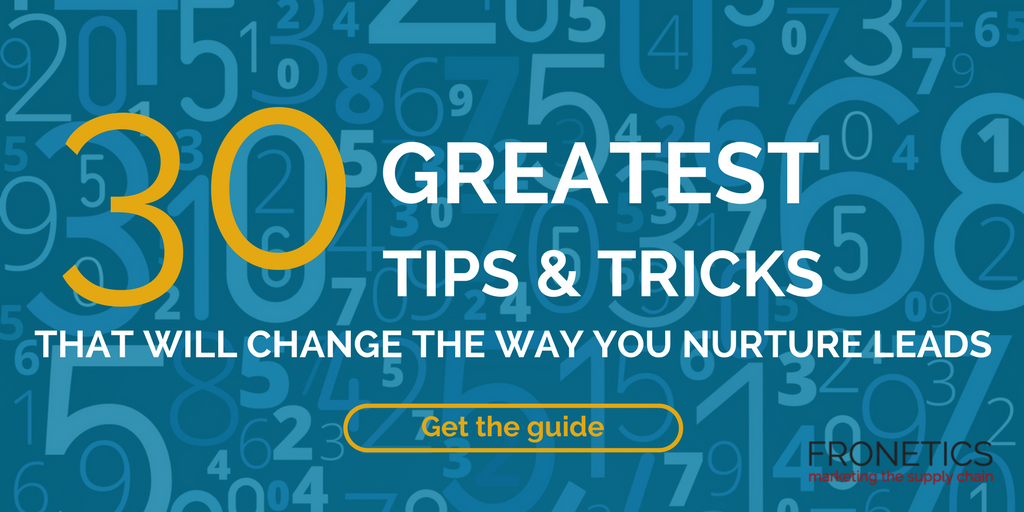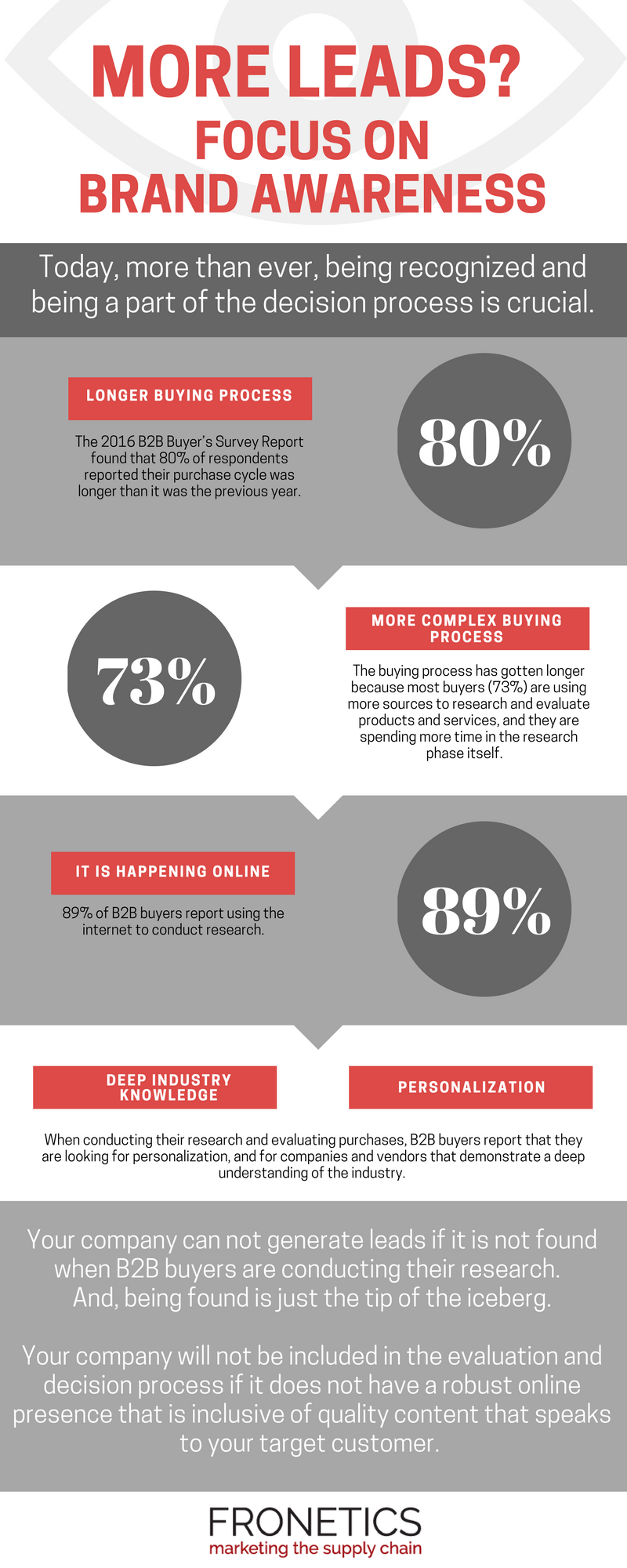
by Fronetics | Jun 19, 2017 | Blog, Content Marketing, Marketing, Social Media
Facebook Lead Ads make it easy for both businesses to gather lead information and for prospective customers to learn more about products and services that interest them.
Only 37% of B2B marketers feel Facebook advertising is working for their business. On pace to hit 2 billion users this year, Facebook obviously has reach. So why is Facebook advertising not showing a greater ROI for your business?
Well, are you using lead ads? If not, that’s probably one of the reasons.
Facebook lead ads allow you to run lead-generation campaigns on Facebook and Instagram. This kind of social advertising shows an ad for your product or service within the news feeds of potential customers. Just set the parameters (e.g., demographics, location, etc.) for your target audience, and the network’s algorithm will identify who sees the ad based on information they’ve provided in their profiles.
But here’s the real kicker: Unlike other ad types, lead ads include a contact form that lets these potential customers show their interest in a product or service by filling out the form with their details without ever leaving Facebook (or Instagram).
Lead generation made easy
These days, people expect that everything from shopping to job searching can be done on their handheld devices. Facebook lead ads make that true for people wanting to learn more about new products or businesses.
Here’s how it works: Potential customers click on a lead ad, and their contact information automatically populates based on information from their profile. No leaving Facebook to visit the business’ website and taking the time to provide contact information necessary. Lead ads makes gathering lead information as easy as two taps on a phone: one to open the ad, and one to submit the information.
“If you want to iterate through lead forms quickly, Facebook Lead Ads are a great way to collect the information without building new landing pages and creating tons of copy,” says Tony Adams in Visible Factors. “The contact forms appear natively on Facebook and Instagram. You can easily use them to sign people up to newsletters for drip marketing campaigns or in a direct B2B campaign funnel.”
According to research from Google, B2B buyers have increased the amount of mobile research they do throughout the B2B purchase path by 91% year over year. With lead ads, Facebook has set the bar for mobile marketing by eliminating the need for customers to fill out time-consuming forms and for companies to create landing pages.
theSkimm, a news and information site, wanted to expand its reach and increase its conversion rate, with the ultimate goal of attracting more highly qualified leads and significantly increasing its subscriber pool. After testing a number of different tactics, theSkimm created a series of Facebook lead ads. The ads featured the company logo to reinforce its branding and a ‘Subscribe’ link inviting people to sign up on the spot. The result was a 22% increase in lead quality at a cost per acquisition of just $1-2.
Creating and modifying your ads
As buyers continue to turn to their handheld devices for quick, easy information, Facebook lead ads will give your brand the opportunity to capture new leads with the click of a button. But just like any form of lead generation, you need to monitor and tweak your Facebook lead ads for optimal results.
Through Facebook’s Ads Manager reporting interface, you can obtain reports about cost, impressions, and clicks. As with all marketing tools, consistent refinement is the key to success. Lead ads can easily be fine-tuned to cultivate a larger target audience.
Facebook lead ads provide B2B companies an opportunity to gain leads and a larger reach. If you haven’t tried this yet, we highly recommend switching over some of your social advertising budget.
Related posts:


by Fronetics | Apr 5, 2017 | Blog, Content Marketing, Marketing, Social Media, Strategy
Try these out-of-the-box ideas for content and other tactics that can help you generate leads.
Generating new leads and growing your business is imperative to a business’s viability. Referrals from current customers are a strong option for growth, but often they aren’t enough to keep a business thriving.
Generating leads is tough work. Creating cold emails can be daunting, and following up with cold calls can be even worse. Most of the time, these calls fall on deaf ears. People don’t want to be pulled away from their day to hear your sales pitch.
Content marketing is the process of creating content that prospects and customers want to consume to educate them about your business, your expertise in the field, and your products and services. Content is an excellent lead-generation tool. But it’s often difficult to create content that does all these things without being an overt sales pitch — which people definitely don’t want to read. And no read, no lead.
So we’ve created a list of 10 ideas for reaching your prospective audience and generating leads with content and more. They’ll appreciate the information, and you’ll help spread the word about your business. Enjoy!
10 ideas for generating leads
1) Interview an expert about success in the field.
Reach out to leaders in your industry to share their thoughts and tips for success. You’ll prove to potential customers that you are committed to discovering the latest and greatest in your field. Don’t be afraid to ask detailed questions and share real answers. The specific answers will enlighten potential customers and provide actionable items for them to walk away with.
2) Create a video.
Videos are a great way to take advantage of social media platforms like YouTube and Facebook. Create fun, entertaining videos that educate potential customers about issues or pain points your business helps solve. Remember to keep your videos short and to the point.
3) Make a quiz.
When visitors come to your website or social media pages, offer them a creative quiz to capture their contact information. Once they have completed the quiz, you get a lead, and they get the correct answers. You’ll learn about more about them as a potential customer, and they can learn more about your products and services.
Eastern International College created a unique quiz to help students choose a major. The quiz helped students learn about their interests and gave Eastern International College useful insight into counseling them on their class selection.
4) Offer content upgrades.
Content upgrades can be a very valuable lead-generation tool. For example, say you’ve written a blog post about the best time to post on social media. Add an offer for a downloadable guide to create a social media strategy at the end of your post. To get the download, customers must submit their contact information via a form. You get the contact info; the customer gets the content upgrade — it’s a win-win!
5) Show your tried-and-true tactics.
What is really working for your business? Write an honest post that allows potential customers the opportunity to see what has really worked for you, and what hasn’t. Your honesty will help cultivate trust with potential customers and benefit other companies looking to grow their lead base.
6) Host a giveaway.
According to Kissmetric Blog, giveaways can be one of the most successful ways to generate leads. The key is to find out what your customers actually want. You can leverage a giveaway to direct online traffic to a landing page, where you can capture new leads. It is important to find a giveaway that is directed at a specific audience. If your giveaway is too broad, you will be left with large list of dead-end leads.
7) Guest blog on a relevant website.
You’ve reached out to experts to put their tips and success stories on your blog — now you need to do the same. Research the sites that your key audience is visiting and offer to guest blog on their site. Create relevant and valuable content that can generate exposure for your company. You will not only come across as a leader in your industry, but you’ll reach a vast new audience.
8) Offer insight into prospects’ top questions.
Consider questions that you hear from prospects and create in-depth tutorials to answer them. Potential customers will find the step-by-step articles useful, giving you the opportunity for a lead. Oftentimes the companies that step up to answer tough questions or provide instructions in easy-to-follow formats are the ones that get the business.
9) Get involved in the community.
There has never been a greater call to get involved in community outreach. Companies that are committed to creating change and engagement in their communities create trust in their customers. Volunteer at local events, guest speak at schools, or help local student organizations. You can demonstrate your expertise while creating real ties to the community. This will help you stand out not only as a leader in your industry, but as a caring and involved brand.
10) Offer a free trial.
According to HubSpot, “free trials of a brand’s services help get a prospect’s foot halfway through the door.” Offering free trials of your services is a great way to demonstrate how your company can add value to your customers. Once they experience the benefits of your services or products, they’ll be more likely to purchase them in the future. The free trial can lead to sales in a low-pressure situation for the customer.
Related posts:


by Fronetics | Mar 13, 2017 | Blog, Content Marketing, Marketing, Social Media, Supply Chain
Use these two strategies to help your blog generate leads faster.
Creating quality content for your blog that educates and engages consumers takes significant investment and resources. But, unfortunately, blog posts usually don’t deliver the immediate ROI that many companies are looking for.
A blog is an excellent lead-generation tool. But, as I’ve written about before, it takes time to generate leads and sales.
Like a fine wine, blog posts become more valuable with age.
Older content — likely, with more shares, likes, and referrals from other webpages — hold more credibility with search engines. The more credible the blog post, the higher it will rank in search engine results. What does this mean for you? The more time your blog has to circulate the internet, the more opportunity people have to read it, the higher it will appear in search queries. It’s that simple.
But your boss wants to see results in the form of leads and sales now. How can you bridge the gap between giving your blog the time it needs to become credible and boosting your lead-generating efforts for this sales cycle?
If you want to accelerate lead generation, it’s going to take a greater investment. But if you’re willing to commit more time and resources, here are two things you can do to see results sooner than later.
Two things you can do now to get leads faster
1. Publish more frequently.
Search engines value posting frequency because it shows that your blog is a consistent source of content. The question is, how much can your organization publish without experiencing a decline in quality and relevancy? Those are other factors influencing search engine rankings, not to mention readership, leads, and conversions.
But “more frequently” doesn’t have to mean going from 0 to 60. Even publishing once more per week can make a dramatic impact. This story, for example, shows how publishing one more post per week helped a client’s web traffic increase by 23%, sales leads double, and a prospect convert to a customer — and that was just in just one month.
A HubSpot study showed a tipping point around 400 total blog posts — blogs with 401+ total posts generated twice as much traffic as those that had published 301-400 posts. And more specifically, B2B companies with 401+ total blog posts generated nearly 3X as many leads as those with 0-200 posts. The faster you can reach that 400 mark, the quicker your results.
2. Don’t neglect your old content.
It’s important to keep in mind that the majority of your web traffic (aka potential leads) will first encounter your older content. Looking at Fronetics’ most-viewed posts last month, for example, 80% were published at least six months prior. In fact, 50% were more than a year old.
What does that mean? For one, you should keep tending to your already published content, particularly those posts that prove to be a consistent source of traffic. Update information; add links to new related posts or other relevant resources; and seek opportunities to insert or update calls-to-action to current offers and campaigns. Making sure those older, consistently popular posts continue to serve and engage your readers will increase your chances of conversion.
Secondly, it’s crucial that you look beyond how the posts you published recently perform. Something that doesn’t get a lot of views in the first week may be a huge traffic source and lead converter in a little time. Many content management systems, like HubSpot, can generate attribution reports, which tell you which web pages users most often visit before converting to a lead. Compare these pages with your high-traffic pages that don’t make the list to see how you can create more opportunities for lead conversion on the pages earning the most traffic.
If you invest the time and resources to run a blog, you owe it to yourself to see it through to success. Doing these two small things can get you there faster.
Related posts:

by Fronetics | Feb 9, 2017 | Blog, Content Marketing, Marketing, Strategy
Time can be a blog’s best friend when it comes to gaining leads, but there are a few things you can do to accelerate lead-generation efforts.
Patience is a virtue, but it’s a particularly difficult one to mind when you’re trying to get your business off the ground.
Whether you are just starting out, are trying to turn things around, or are just looking to inject a little energy into things after some slow growth, your company has probably made an investment in your marketing efforts. Now comes the tough part, if you’re on the marketing team: The bosses are going to want to see results in the form of leads and sales.
Fair enough. Blogging is one of the best ways to boost your lead-generation efforts. The trouble is, however, that is normally takes some for those benefits to come to fruition.
I’m not going to say it’s a marathon…
But blogging is certainly not a sprint. Your posts need time to start drawing traffic — and then, from traffic comes leads. So the transitive property tells us that lead generation takes time. Here’s why.
As with many things, blog posts become more credible with age. That is to say, search engines value things that older content has had more time to accumulate, like social shares and referrals from other web pages. The more relevant a blog post proves itself to be to readers over time, the higher it will rank in search engine results.
On the other hand, new blogs without much content don’t have much to tell search engines. Search engines don’t trust them yet — and search engines’ algorithms are designed to avoid leading searchers down a stray path. So posts from new or young blogs are less likely to appear within the first page(s) of search results, which is key to sourcing organic traffic.
So what’s a marketer who is charged with generating leads to do?
Set realistic expectations
Be realistic about how quickly your blog will start generating leads when you first set your content strategy. Consider things like the length of your sales cycle. You can’t expect a reader to hasten down the sales funnel any faster than a normal prospect. And remember that the reader probably won’t catch your post on the first day it’s published. (More on that later.) So, if your sales cycle is 90 days, you might see a lead 90 days after you start publishing. But, in reality, it will probably take a little longer.
Instead of relying entirely on leads to define success, you should spend the first months focusing on the metrics that are precursors to lead generation. Increased web traffic and greater social reach and engagement, for example, are solid proof that the needle is moving in the early days of a new content marketing program. Set goals for these metrics, and communicate with leadership that they are all indicators that your content strategy is working, and that leads should follow in time.
But how can I get my blog to generate leads faster?
If you want to accelerate lead generation, it’s going to take a greater investment. But if you’re willing to commit more time and resources to speed things along, here are two things you can do.
1. Publish more frequently.
Search engines value posting frequency because it shows that your blog is a consistent source of content. The question is, how much can your organization publish without experiencing a decline in quality and relevancy? Those are other factors influencing search engine rankings, not to mention readership, leads, and conversions.
But “more frequently” doesn’t have to mean going from 0 to 60. Even publishing once more per week can make a dramatic impact. This story, for example, shows how publishing one more post per week helped a client’s web traffic increase by 23%, sales leads double, and a prospect convert to a customer — and that was just in just one month.
A HubSpot study showed a tipping point around 400 total blog posts — blogs with 401+ total posts generated twice as much traffic as those that had published 301-400 posts. And more specifically, B2B companies with 401+ total blog posts generated nearly 3X as many leads as those with 0-200 posts. The faster you can reach that 400 mark, the quicker your results.
2. Don’t neglect your old content
It’s important to keep in mind that the majority of your web traffic (aka potential leads) will first encounter your older content. Looking at Fronetics’ most-viewed posts last month, for example, 80% were published at least six months prior. In fact, 50% were more than a year old.
What does that mean? For one, you should keep tending to your already published content, particularly those posts that prove to be a consistent source of traffic. Update information; add links to new related posts or other relevant resources; and seek opportunities to insert or update calls-to-action to current offers and campaigns. Making sure those older, consistently popular posts continue to serve and engage your readers will increase your chances of conversion.
Secondly, it’s crucial that you look beyond how the posts you published recently performed. Something that doesn’t get a lot of views in the first week may be a huge traffic source and lead converter in a little time. Many content management systems, like HubSpot, can generate attribution reports, which tell you which web pages users most often visit before converting to a lead. Compare these pages with your high-traffic pages that don’t make the list to see how you can create more opportunities for lead conversion on the pages earning the most traffic.
Most importantly, if you invest the time and resources to run a blog, you owe it to yourself to see it through to success. Just because you don’t generate hundreds of leads in the first few months doesn’t mean you won’t eventually. It’s just going to take some time.
Related posts:


by Fronetics | Jan 9, 2017 | Blog, Content Marketing, Marketing, Social Media, Strategy, Supply Chain
Why brand awareness is important to growing your business
The singular goal of most companies that contact Fronetics is to generate more leads — today. This is not surprising in that leads are necessary to generate sales, and sales are necessary to revenue generation and to growth. What is surprising is the number of companies who do not recognize the critical role brand awareness plays in lead generation.
Brand awareness is the likelihood that your company’s brand, products, and services are recognized by consumers. Simply put, if consumers don’t know your company exists and/or don’t know what your company does or what your company offers, your company won’t be a part of their decision process.
Today, more than ever, being recognized and being a part of the decision process is crucial.
The new B2B buying process
The buying process for B2B buyers has become more complex and longer. The 2016 B2B Buyer’s Survey Report found that 80% of respondents reported their purchase cycle was longer than it was the previous year. The buying process has gotten longer because most buyers (73%) are using more sources to research and evaluate products and services, and they are spending more time in the research phase itself.
When conducting their research and evaluating purchases, B2B buyers report that they are looking for personalization, and for companies and vendors that demonstrate a deep understanding of the industry.
The place they are turning to conduct their research, and to evaluate purchases, is online: 89% of B2B buyers report using the internet to conduct research. Specifically, they are going online to: conduct web searches, look at vendor websites, read reviews, use social media, and participate in online forums.
The importance of investing in brand awareness
Your company can not generate leads if your company is not found when B2B buyers are conducting their research. And, being found is just the tip of the iceberg. Your company will not be included in the evaluation and decision process if it does not have a robust online presence that is inclusive of quality content that speaks to your target customer — that is, content that educates, informs, and identifies how your company can meet the needs of your target customers. It is about positioning your company as a knowledge leader, building trust, and establishing relationships. It is about brand awareness.
Building brand awareness takes time and dedication. Companies that are willing to invest their time and resources to brand awareness are rewarded – not just with leads, but with quality leads.
Too often, I see companies who are unwilling to invest either the time or money in brand awareness. One of the most frustrating things to see is a company that gives up too soon. These are companies who have realized significant gains — they have, for example, increased traffic to the website through organic, referral, direct, and social sources; decreased bounce rates; increased social reach; and increased social engagement. But, because their lead generation has not immediately sky rocketed, they decide to either reduce or eliminate their digital and content marketing activities. It is frustrating because these companies have built a strong foundation, and they are on the tipping point of success.
With the B2B buying process taking longer than ever, with buyers spending more time researching and evaluating their decisions, and with B2B buyers turning to the internet and critically evaluating companies on how they present themselves, investing the time and resources to brand awareness is critical.
As Geoffrey Chaucer said, “Patience is a conquering virtue.”

You may also like:








